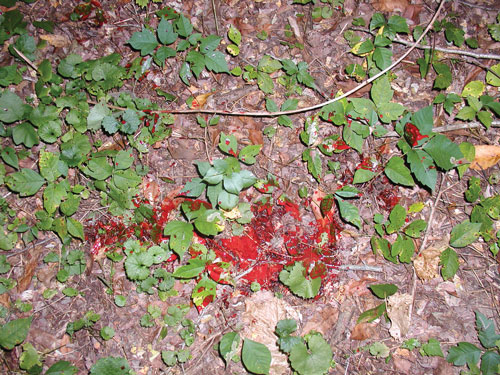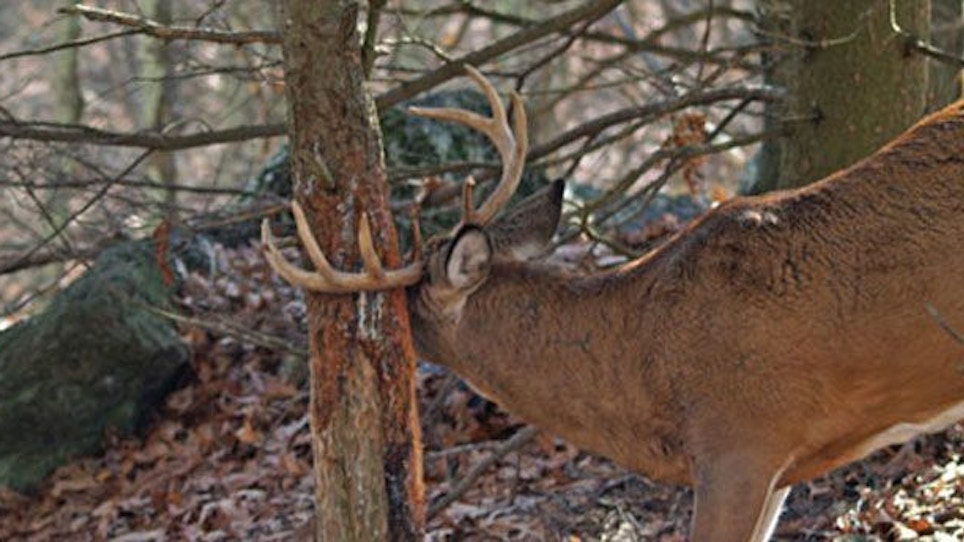Take the test and see if you know as much as you think you do!
Answers will be revealed in part II.
 1) Archaeological evidence reveals that both male and female deer used to have which body characteristic?
1) Archaeological evidence reveals that both male and female deer used to have which body characteristic?
A: Antlers
B: Both sex organs
C: Fangs
D: Much smaller ears than they do today
E: All of the above
2) While looking for deer sign, you find a huge scrape, but no licking branch above it. What does this indicate about the buck that made the scrape?
A: It’s a young buck.
B: The buck probably won’t return to the scrape.
C: The buck made the scrape at night.
D: The buck made the scrape in an area where other deer can easily find it, suggesting the buck is mature.
E: None of the above
3) What’s the most weight that an active breeder buck will lose due to rutting activity?
A: 5 percent of its body weight
B: 10 percent
C: 20 percent
D: 25 percent
E: 35 percent
4) For antler velvet to come off, a buck must do what?
A: Rub its antlers on trees, shrubs, bushes or fence posts
B: Spar with other bucks, causing testosterone levels to rise and antler velvet to slough off
C: Eat a sufficient amount of protein, which causes antlers to harden and velvet to fall off
D: All the above
E: None of the above
5) While scouting, you find a group of rubs made on the north side of several trees. What does this tell you about the rub’s architect?
A: Nothing
B: The buck was traveling south.
C: The buck is mature.
D: The buck was traveling north.
E: The buck was looking for an estrus doe.
6) Since the 1960s, which disease has killed the most whitetail deer in the United States?
A: Bovine tuberculosis
B: Chronic wasting disease
C: Hemorrhagic disease
D: Equine encephalitis
E: Whitetail influenza
7) What is the size of a typical buck’s home range (where it spends 90 percent of its time)?
A: 500 yards
B: 500 yards
C: 1 mile
D: 2-10 miles
E: It varies by buck.
8) When is the best time to hunt near a fresh scrape line?
A: Right before the peak of the rut
B: During the peak of the rut
C: Immediately following the rut
D: During the secondary rut
E: There is no best time, because bucks make scrapes throughout the year.
9) In any given year, what are your odds of harvesting a Boone and Crockett whitetail?
A: 1 in 760
B: 1 in 7,600
C: 1 in 76,000
D: 1 in 760,000
E: 1 in 7,600,000
10) According to Quality Deer Management beliefs, having a balanced sex ratio of adult (1.5 years old and older) females to males is critical to achieving a healthy deer herd and improving the quality of bucks. What’s the highest the sex ratio can become skewed in the wild?
A: 3:1 (3 does for every 1 buck)
B: 5:1
C: 7:1
D: 10:1
E: 15:1
11) If a buck sustains a major injury to its right hind leg, how will the injury affect antler development in future years?
A: The right antler will develop abnormally.
B: The left antler will develop abnormally.
C: Both the right and the left antlers will develop abnormally.
D: The left antler will develop abnormally for one year, and then will be unaffected in future years.
E: The injury will have no effect on antler development.
12) Which color can whitetails see?
A: Blue
B: Red
C: Orange
D: All of the above
E: None of the above
13) On average, how many hours a day do whitetails sleep?
A: 2
B: 4
C: 6
D: 10
E: Deer don’t sleep, but instead rest frequently throughout the day, enabling them to avoid predators.
14) Researchers have found that baiting increases a hunter’s chances of harvesting which deer?
A: Does
B: Young bucks
C: Mature bucks
D: Both A and B
E: All of the above
15) You’re tracking a wounded deer, and suddenly the blood trail ends. What does this tell you about your shot?
A: You hit the deer in the intestines.
B: You hit the deer in a major muscle.
C: You hit the deer in the brisket.
D: It was fatal, and the deer has bedded down.
E: Very little, because the deer might have doubled back on its tracks.






